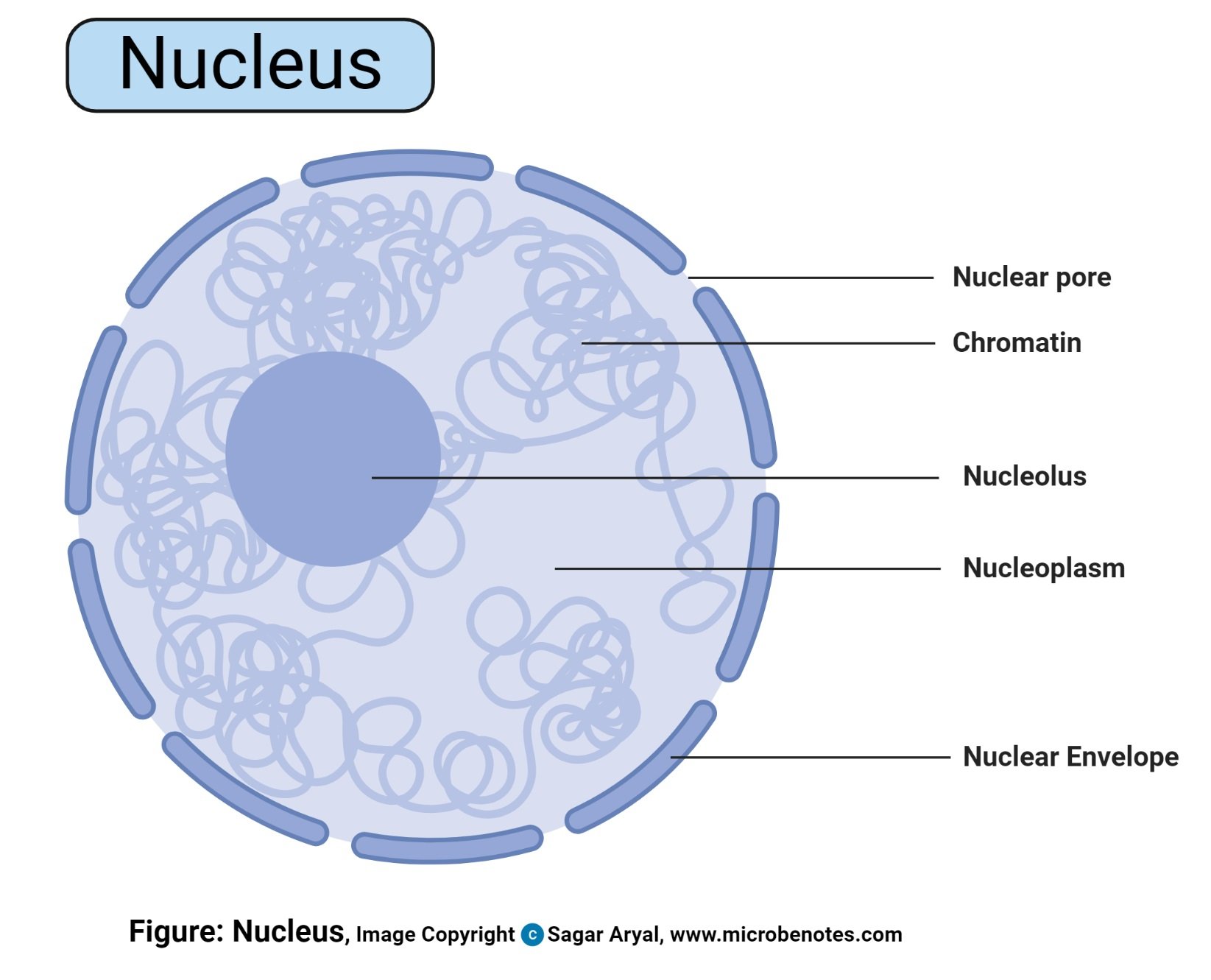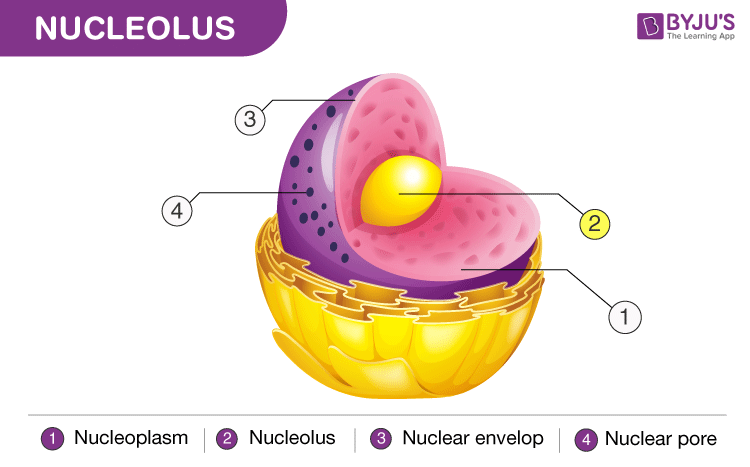Describe Briefly the Functions of the Nucleus and the Nucleoli
Mitochondrion is where cellular respiration occurs and most ATP if generated. The nucleus is a cell organelle which is spherical and is present in all the eukaryotic cells.

Nucleus Structure Function Euchromatin Teachmephysiology
The nucleus functions the selective transportation of regulatory factors and energy molecules through nuclear pores.

. Photosynthetic organelle converts sunlight energy to chemical energy stored in sugar molecules. Highlight the functions of the nucleus. The nucleolus fabricates subunits of ribosomal from proteins and RNA which is also perceived as rRNA.
Organized as DNA molecules along with a variety of proteins to form chromosomes. The nucleus plural nuclei houses the cells genetic material or DNA and is also the site of synthesis for ribosomes the cellular machines that assemble proteins. Ribosomes produce proteins hence the nucleolus performs an important function in producing proteins in the cell.
The nucleolus controller regions of chromosomes which harbor the genetic factor for prerRNA are the basis for the nucleolus. The main function of the nuclear lamina is to organize the structure of nucleus. Within these parts the nuclear envelope is the membrane enclosing the nucleus and continuous with ER.
It is composed of three protein subunits called lamin A lamin B and lamin C. The nucleus has 2 primary functions. Some nuclei plural of nucleus may contain meany nucleoli plural of nucleolus.
The nucleus provides a site for genetic transcription that is segregated from the location of translation in the cytoplasm allowing levels of gene regulation that are not available to prokaryotes. Describe briefly the functions of the nucleus and nucleoli. In order for a nucleus to carry out important reproductive roles and other cell activities it needs proteins and ribosomes.
It is not surrounded by a membrane but sits in the nucleus. The nucleus has three main parts. These products are key in the synthesis of proteins which are the basic building blocks of all biological tissue.
Nucleus It coordinates cell activities like protein synthesis and cell division Nucleoli It takes part in the production of subunits that unites to form ribosomes. Nucleoli are round bodies that form in certain regions of specific chromosomes. The nucleus is a big ball containing a nucleur envelope nucleolus chromatin can contain dna and produce ribosomes.
The main function of the nucleolus is in the production of ribosomes and synthesis of ribosomal RNA rRNA. It is responsible for storing the cells hereditary material or the DNA. Ribosomes pass out of the nucleus into the main body of the cell see Ribosome.
Nucleolus is a non membranous structure involved in production of ribosomes. All cells of the body have a nucleus at some point in their life cycle although some cells such as red blood cells lose their nuclei as they mature. The key function of the nucleus is to control cell growth and multiplication.
This involves regulating gene expression initiating cellular reproduction and storing genetic material necessary for all of these tasks. All active nucleoli comprise two ultrastructure constituents the nucleolus thick febrile constituent. It then sends the subunits out to the rest of the cell where they combine into complete ribosomes.
Nucleus - is a large organelle usually located near the center of the cell. Stereo view of a triple-labeled HeLa cell nucleus showing the localization of coiled bodies green GFP-coilin PML bodies red autoimmune serum recognizing SP100 and. Nucleus contains majority of cells genetic material.
Nucleus is referred to as the control centre of the eukaryotic cells. The nucleus is the control centre of an organism as it regulates the integrity of genes and gene expression. They are created in the nucleoli.
The nucleolus whose key function is to hold ribosomes together is the main structure in the cell nucleus. A major function of the nucleus is to make structures called ribosomes. It then transfers the subunits out to the bottom of the cell where they merge into intact ribosomes.
It also helps in the coordination of both the genes and the gene expression. Nucleus - Surrounded by the nuclear envelope. It is a membrane bound structure that contains the cell s hereditary information and controls the cells growth and reproduction.
Inside the nucleus chromatin DNA wrapped around proteins described further below is stored in a gel-like substance called nucleoplasm. Describe briefly the functions of the nucleus and the nucleoli. The nucleolus is a round body located inside the nucleus of a eukaryotic cell.
Nuclear envelope nucleolus and chromatin. The nucleus consists of other structures such as the nuclear membrane nucleoplasm nucleolus and chromosomes. The nucleolus makes ribosomal subunits from proteins and ribosomal RNA also known as rRNA.
Nucleoli are present in almost every eukaryotic cell type and represent the most prominent compartment of the cell nucleus. 62 1Briefly describe the structure and function of the nucleus the mitochondrion the chloroplast and the endoplasmic reticulum. The mitochondria is a small oval responsible for the generation of ATP energy and cellular respiration.
The lamins become phosphorylated during mitosis due to which the lamin proteins get solubilized resulting in. Nucleolus A small round granular body composed of protein and RNA in the nucleus of a cell. The main function of the cell nucleus is to control gene expression and mediate the replication of DNA during the cell cycle.
The substance of a cell nucleus consisting of strands of DNA RNA and various proteins that forms chromosomes during cell division. Chromatin is a material that consists of DNA and proteins. The primary function of the nucleolus consists in ribosomal RNA rRNA transcription rRNA processing and ribosome subunit assembly Hernandez-Verdun et al.
It is responsible for coordinating many of the important cellular activities such as protein synthesis cell division growth and a host of other important functions. The nucleus contains all the genetic material of an organism like DNA genes chromosomes etc.

Nucleus Definition Structure Parts Functions Diagram

No comments for "Describe Briefly the Functions of the Nucleus and the Nucleoli"
Post a Comment